Gluten-Free Japanese Nikujaga (Japanese Beef Stew)
ShareUpdated October 13, 2023
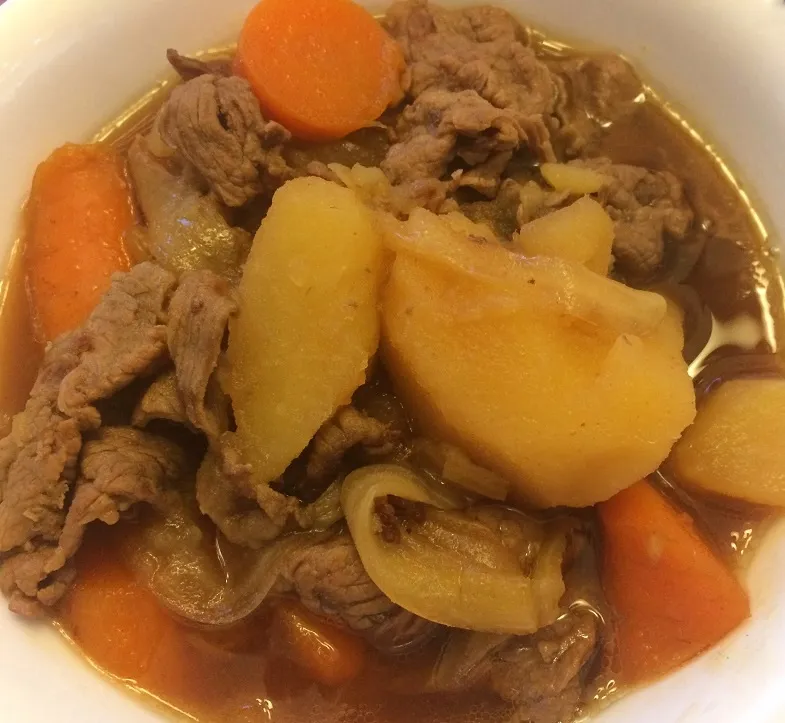
In the winter, one of my families favourite Japanese meals in nikujaga. "Niku" means meat, and "jaga" stands for "jagaimo" which means potato. Literally, the name of this dish in Japanese is Meat and Potatoes - a beef stew flavoured with sake, sugar and soya sauce. It is very popular in Japan.
I make a large amount of nikujaga. I use a 13 litre pot! It is great as leftovers. If you want to divide the recipe in half, just remember to start with 1/4 of the seasonings, and add additional amounts after tasting.

Cut your onions thinnly.
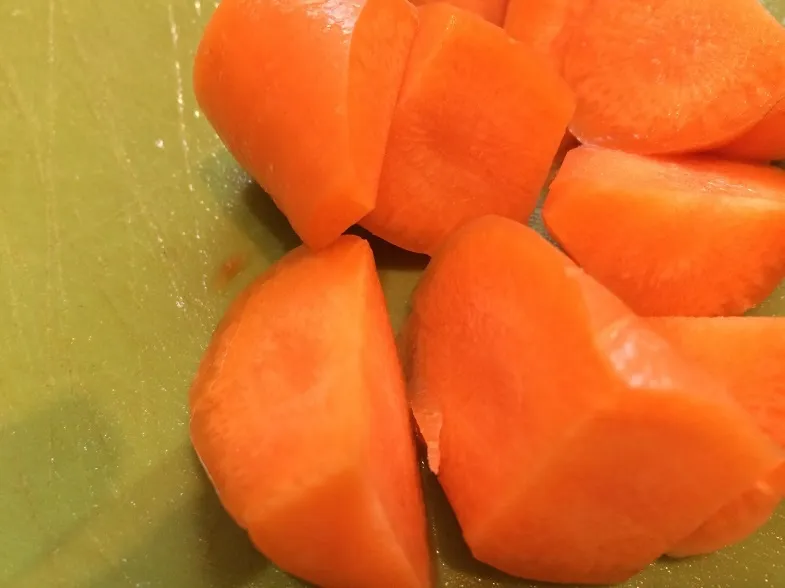
Peel and cut the carrots into chunks.
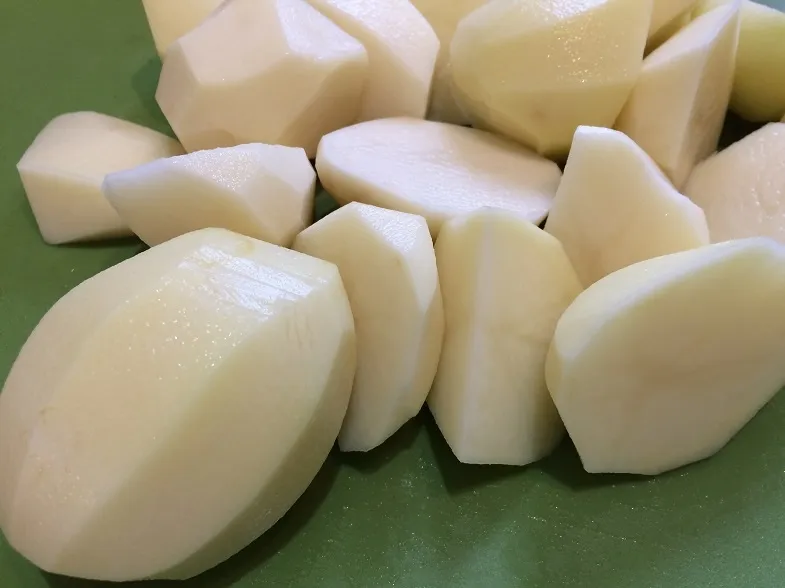
Peel and cut your potatoes in large chunks. I usually cut them in fourths. I have one uncut to show the size. My family loves potatoes, so we add the whole 8 cups, but you can use less if you like.

I always quickly brown my meat, and then set aside. I finish cooking it later in the pot with the water, vegetables and seasonings. I think it enhances the flavour of the dish.
When I buy my meat, I pick a nice looking roast that has some marbling, and ask my butcher to slice it thinly for sukiyaki. If you can't get your meat sliced for you, then I recommend partially freezing it, and then with a sharp knife very carefully cut thin slices.
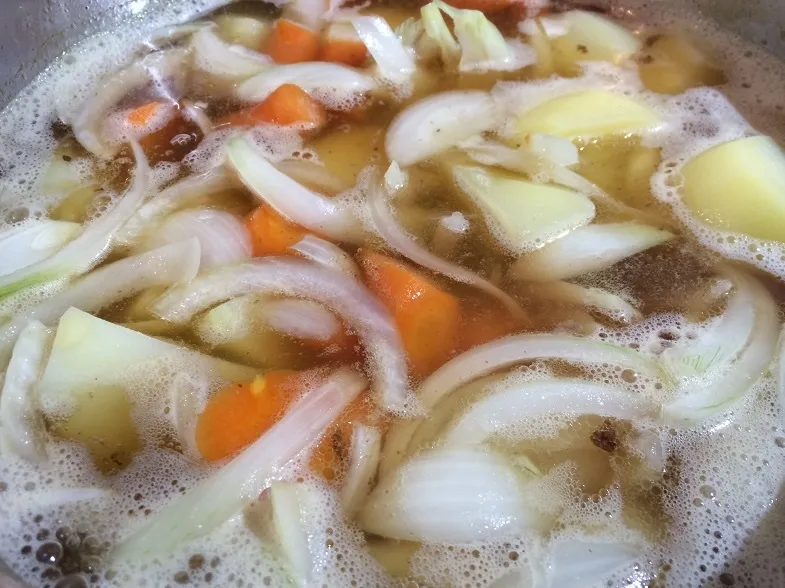
Here is what the nikujaga looks after adding the water and seasonings to the pot. I bring it to a boil, then turn down to a medium heat and cook until the potatoes and carrots are done. Usually takes about 30 to 45 minutes. Then, I uncover it, and cook on a higher temperature to reduce the liquid. This takes about 20 to 30 minutes. It is important to reduce the liquid. You want the broth to darken in colour. This intensifies the flavour of the broth.
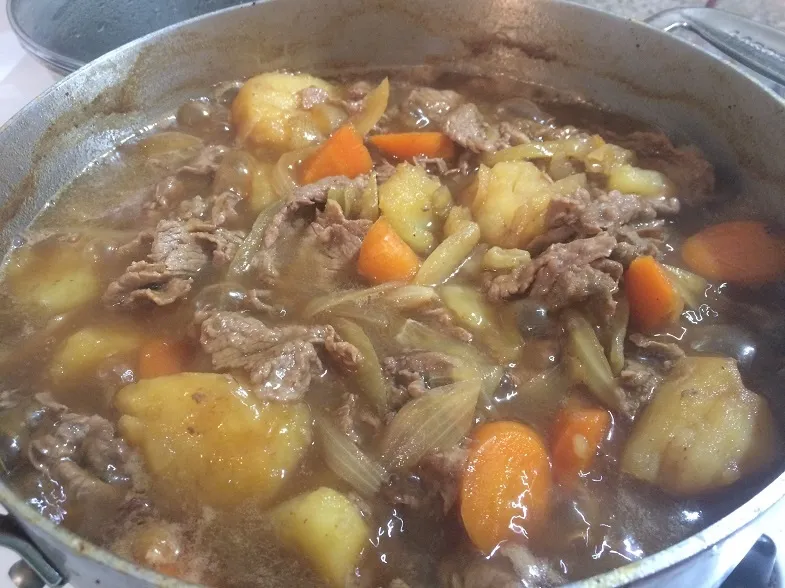
Here is what the finished pot of nikujaga looks like. You can see that the liquid has been reduced, if you compare the two photos. You can see the original cooking line on the above photo, I've let the broth reduce by about an inch. By letting the liquid reduce you are enhancing the flavour of the broth.
Gluten-Free Japanese Beef Stew (Nikujaga)
Ingredients
- 4 tablespoons oil
- 1 kilogram thinly sliced beef
- 4 cups onions, sliced
- 6 to 8 cups peeled potatoes, cut in fourths
- 2 cups peeled carrots, cut in chunks
- 6 cups water
- 1/2 cup cooking sake
- 1/4 to 1/3 cup sugar (Start with 1/8 cup, and then taste the broth - add more if needed. We like our nikujaga sweet.)
- 1/2 to 3/4 cup gluten-free soy sauce (This depends on the strength of your soy sauce. So, I recommend starting with half the stated amount, then taste after it has cooked, and add more as needed.)
Directions
- Put a large pot (I use a 13 litre pot), on medium heat, and add 2 tablespoons of the oil. Then, add the thinly sliced beef, and fry until browned. Remove the meat and set aside.
- Peel, wash and cut up your vegetables.
- To the same pot you fried the beef in, add the rest of the oil. Then add your vegetables, and stir till coated in oil. Cook for about 5 minutes.
- Add the water, sake, sugar, and meat back to the pot, and continue cooking till the vegetables are half done. Then add the gluten-free soy sauce and cook until the potatoes and carrots are tender. Remove the lid and keep the stew cooking to reduce the broth. It is important to reduce the broth as this intensifies the flavour. I usually boil until the original broth level has decreased by about 1 to 2 inches. You want the broth to darken a little. Always taste test as it is cooking to adjust the sweetness and the soya sauce flavour. Depending on your range this takes 20 to 30 minutes.
- Serve in individual bowls with rice on the side.
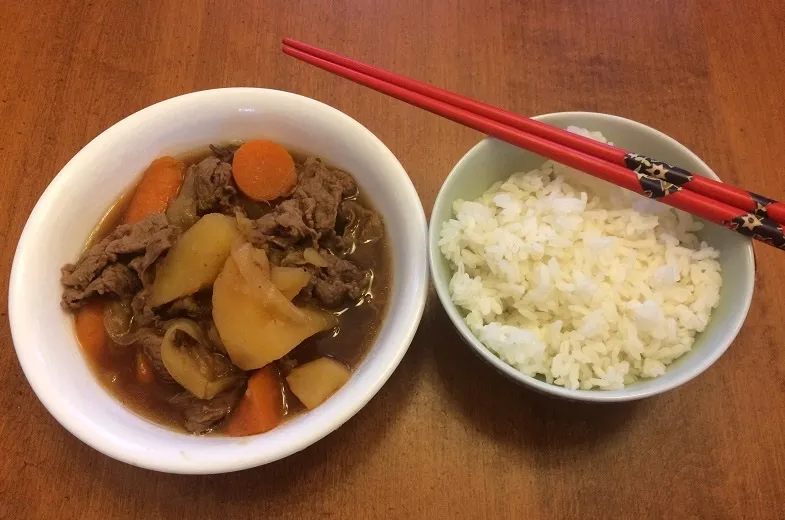
Nikujaga is served in a bowl on its own with rice in a bowl on the side. This is the way my family makes nikujaga. It has many variations across Japan. Sometimes konnyaku noodles are added, and some areas of Japan use minced pork instead of beef. This dish is very much like beef stew and can have endless variations. So, enjoy it on a cold winters day, and let me know your favourite variation.
For another popular Japanese winter dish, check out Gluten-free Japanese Curry recipe